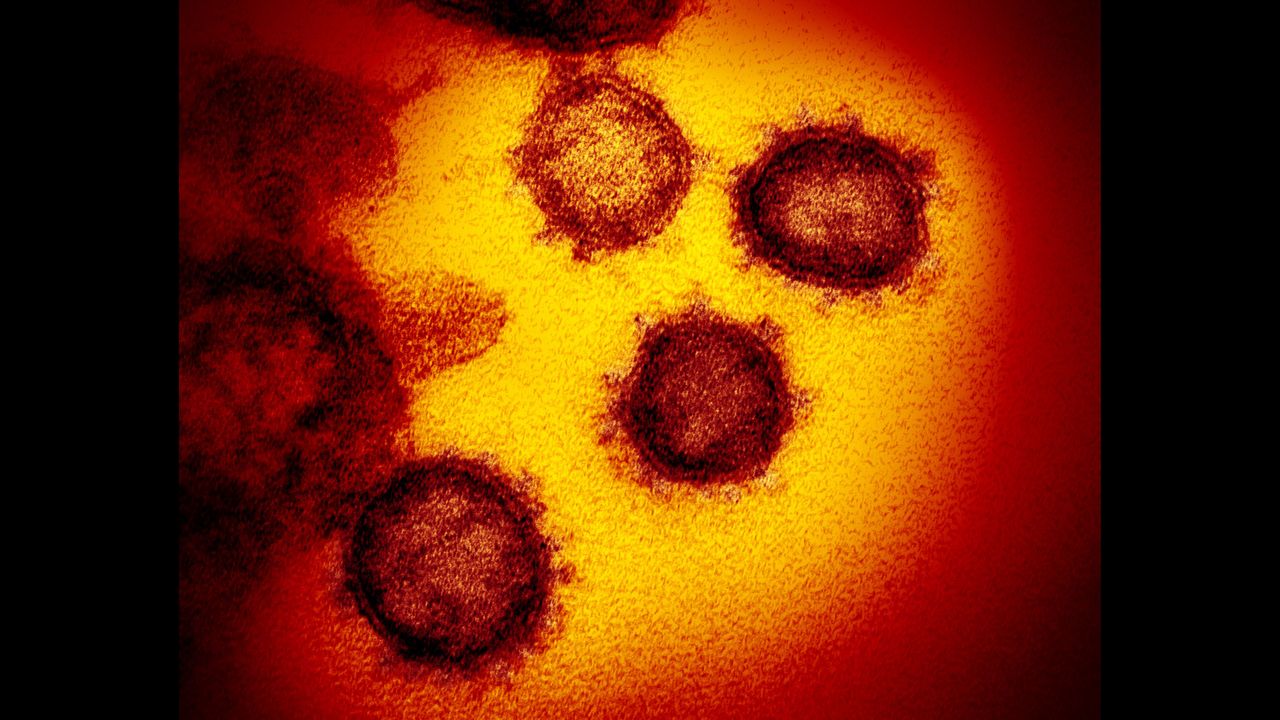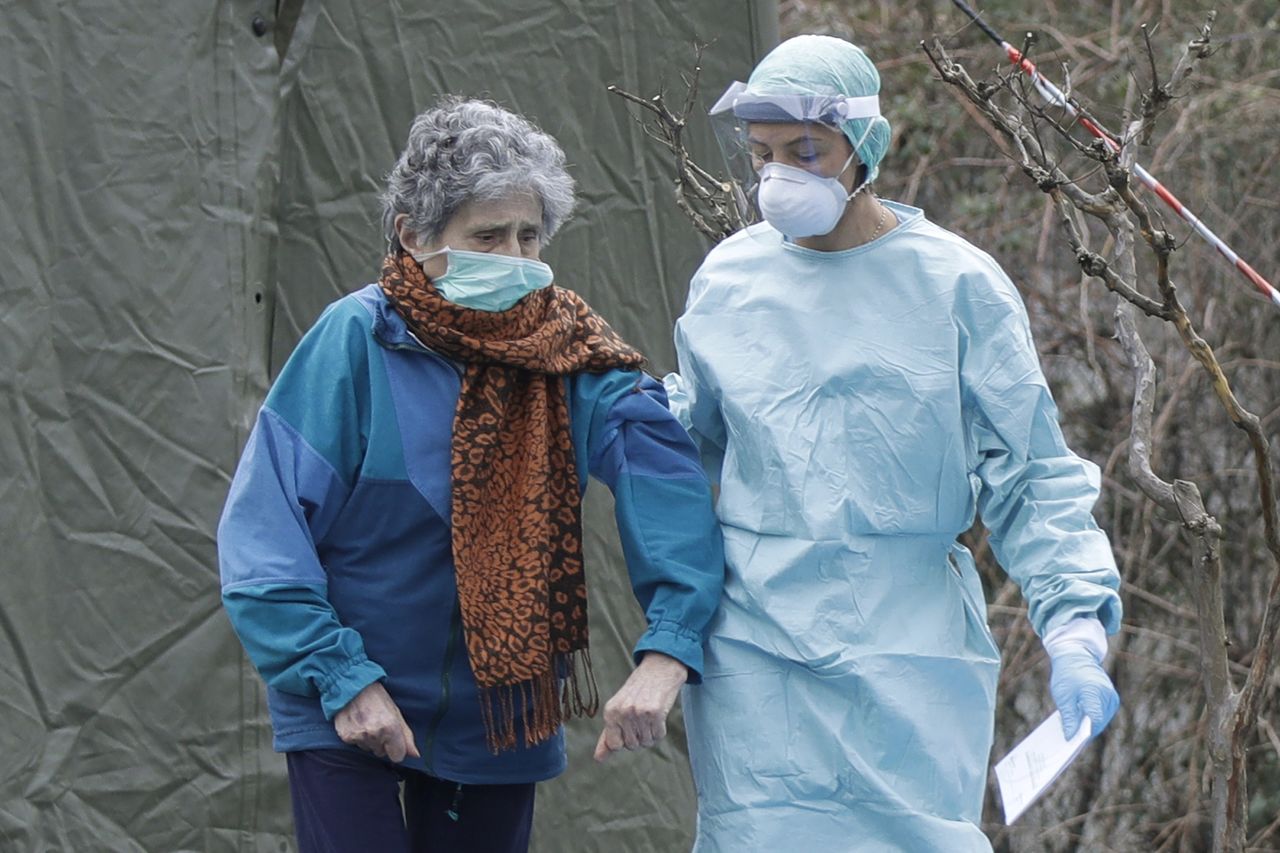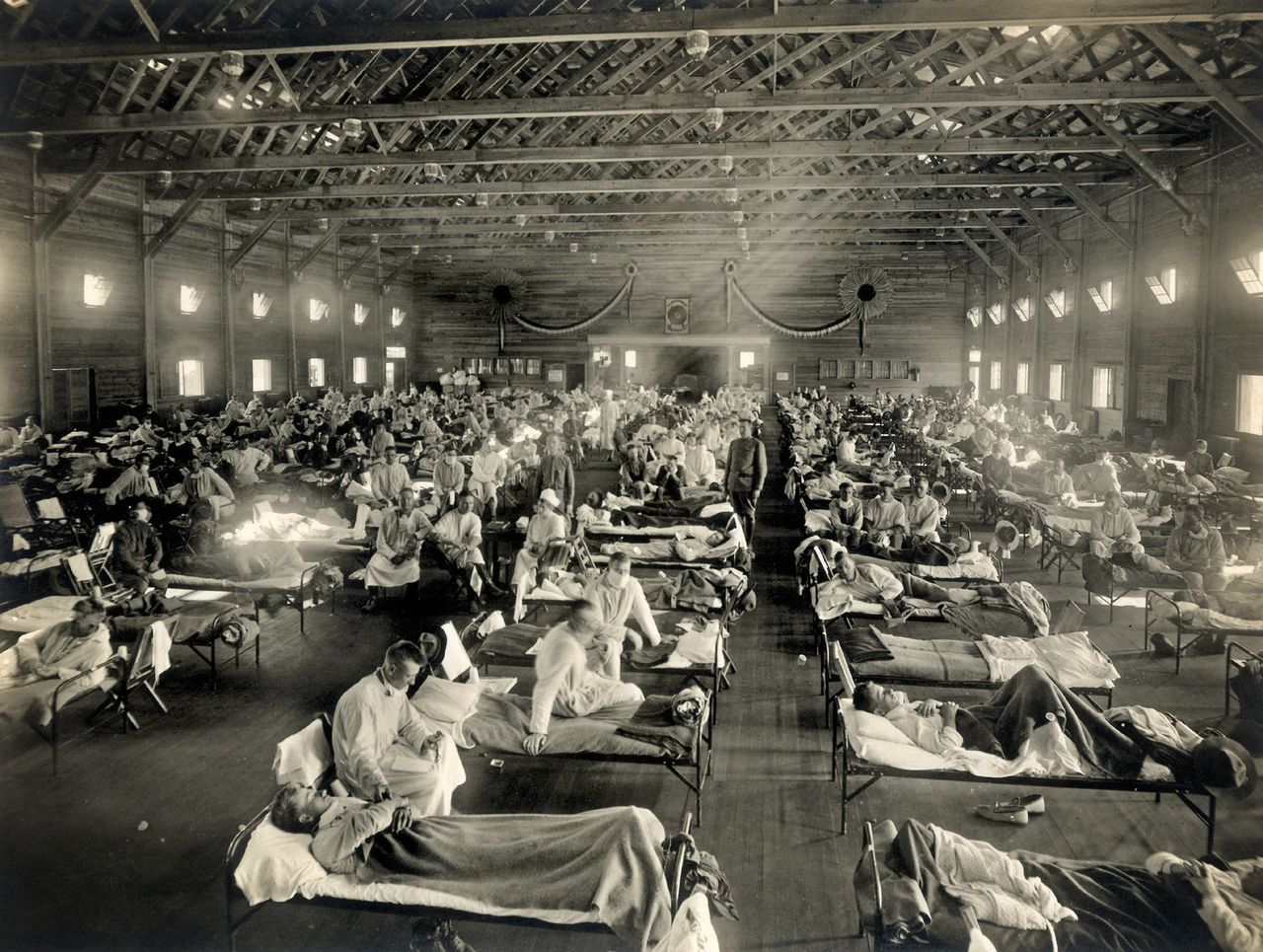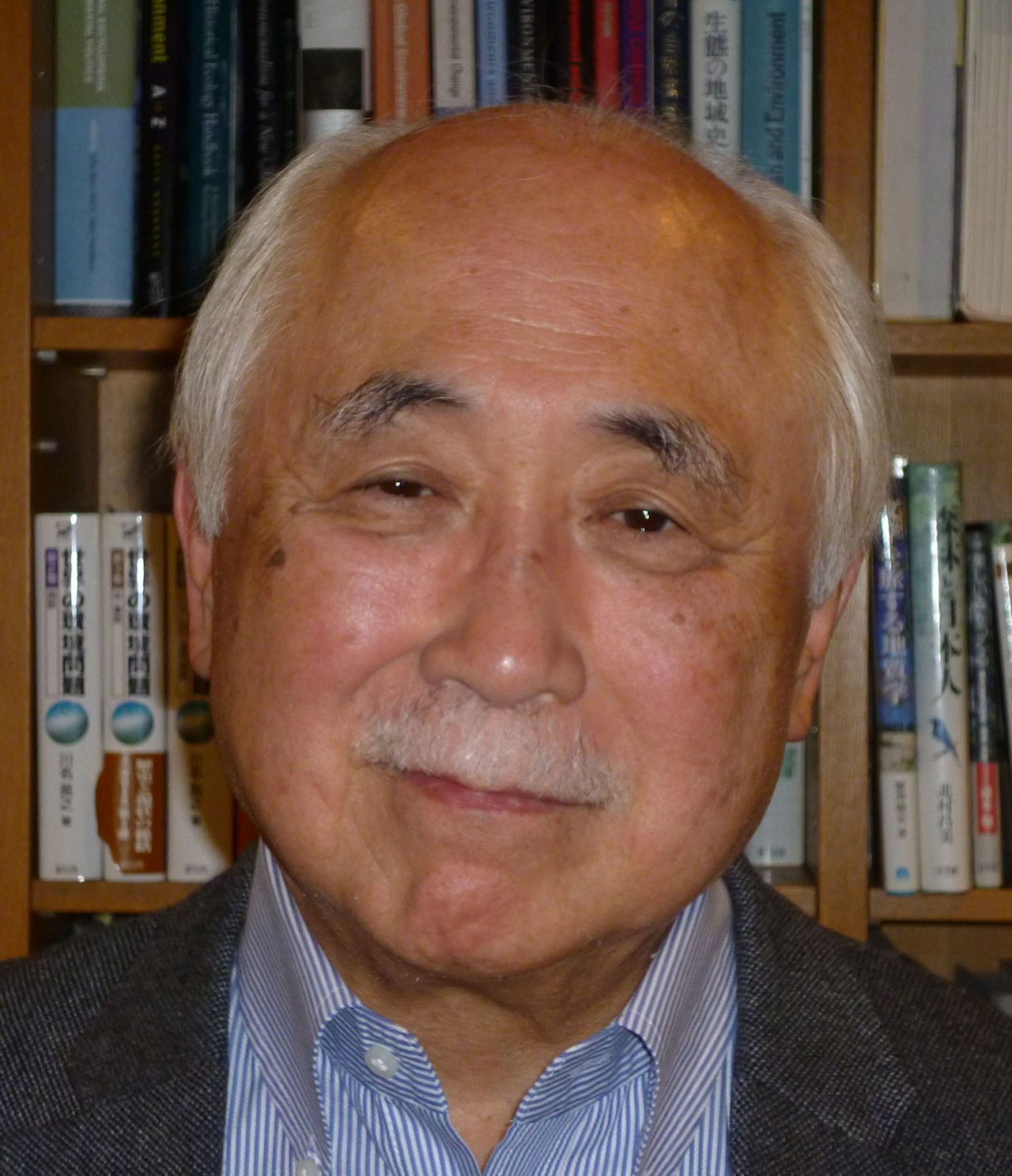
An Endless Arms Race: Viruses as Humanity’s Natural Predator
Society History Health- English
- 日本語
- 简体字
- 繁體字
- Français
- Español
- العربية
- Русский
Four Billion Years of History
Human beings have long feared infectious diseases, and this has led to the development of medicine and improvements in public health. But viruses and other microorganisms build up a resistance to drugs, in turn. As humans bolster their immunity to viruses, the enemy becomes still more virulent. And new virus strains can appear as a reaction to the development of vaccines.
“It’s just like an arms race,” explains Ishi Hiroyuki, a 79-year-old environmental journalist and author of Kansenshō no sekaishi (A World History of Infectious Diseases).
“We are the descendants of the ‘fortunate ancestors’ who survived past epidemics. But the viruses, too, are the descendants of their own fortunate ancestors that survived and transformed themselves over the past four billion years.”
According to Ishi, the novel coronavirus is one of the tens of millions of viruses that exist, and its prototype can be traced back around 8,000 years. It is not clear whether the virus was causing unknown infections over that time, but the prevalent view is that it existed among wild animals and livestock. From 2002 to the following year, it struck human beings in the form of SARS (Severe Acute Respiratory Syndrome), originating in China. Worldwide SARS infections totaled around 8,000, with 774 deaths.
This was followed in 2012 by the emergence of MERS (Middle East Respiratory Syndrome), which was first confirmed in Saudi Arabia and then spread to South Korea and elsewhere, infecting around 2,500 worldwide and claiming 858 lives.
SARS was passed directly from civet cats to human beings, while MERS was transmitted from camels. Ishi says that the transmission from camels was a “completely unimaginable” occurrence.
A Coronavirus’s Clever Transformation
The relation to human beings of the coronavirus, which is around one 100 nanometers in size, became clear in the 1960s. At the time, not much attention was paid to the coronavirus, which was regarded as just another cold-causing pathogen. “In the space of just sixty years,” Ishi observes, “the coronavirus cleverly evolved through continual gene alterations.”
Its third transformed appearance—as SARS-CoV-2, the cause of the COVID-19 disease—follows its previous incarnations as SARS and MERS. In the case of SARS, back in 2002, nearly everyone effected developed severe symptoms and pneumonia, so the spread of the virus was recognized immediately and countermeasures taken. That was not the case for COVID-19, however, since there were many mild cases and asymptomatic infections, making it hard to contain the spread of the disease.
Moreover, infections are spreading because of the fearsome adaptability of the virus, which can make persons infectious even when they display no symptoms.
For viruses and microbes, the bodies of human beings and other mammals offer an ideal habitat, with a constant temperature and abundant nutrients. So the viruses seek to enter host beings, where they can replicate freely.
Ishi makes the following comparison to the struggle between viruses and human beings: “The pitcher, or virus, seeks out the weaknesses of the batter—a human being—and tries to get a strike out by throwing different kinds of pitches, while the batter does everything possible to get a hit.”
He also makes the following, more contemporary comparison: “It’s like the battle between a computer user and a hacker. Human cells try to keep the virus out by barring the way with a password, but the hacker, here the virus, uses every method possible to uncover the password and get inside. The virus mutates at a furious pace to fit perfectly into the keyhole, so human beings are hard pressed to stop the intruder. But humans try to counter this by filling up the keyhole. This is the competition that goes on between the two sides.”
Ishi sees the current battle against the novel coronavirus playing out in the following way: “Now the virus has the upper hand in a pandemic situation, but I think that within a year it will probably be under control. And then, in about ten or twenty years, it will come back in a different form.”
As for the Tokyo Olympics and Paralympics, Ishi says: “Judging from past cases, it takes about six months to a year from the declaration of a pandemic until the declaration of its end. Even if there are no cases of infection domestically, it seems doubtful that Japan would be able to hold such an event that attracts people from all over the world.”

An elderly patient assisted by a doctor at a medical facility in Brescia in the northern Italian region of Lombardy. As of March 12, there were 15,113 cases of novel coronavirus in Italy and 1,016 deaths. Italy is the second country after China, where the virus first appeared, to have a death toll that exceeds 1,000. (© Luca Bruno/AP Photo/Aflo)
The Silk Road as a Viral Conduit
Infectious diseases caused by viruses have had a great impact on human history. Our human ancestors emerged on the African continent 200,000 years ago—long after the appearance of viruses, which dates back 4 billion years. Around 125,000 years ago they began to migrate from Africa to other parts of the world, finally reaching every continent except Antarctica around 50,000 to 60,000 years ago.
The reason for the migration from Africa is often thought to have been the search for food or to escape from changes in the climate and environment. But Ishi points out that another explanation could be that they were fleeing infectious diseases contracted from animals there. In other words, some think that due to many deaths from illness, the inhabitants of African had to move to other parts of the world.
The Silk Road was historically the great trade route linking the opposite ends of Eurasia, but the movement of people also brought illnesses along. The Silk Road became a disease route between East and West. The plague traveled from east to west, while smallpox and measles traveled in the opposite direction. Epidemics occurred on both sides, since neither population bore immunity to the other side’s diseases.
Many unwanted passengers accompanied the human movement between East and West, such as rats, cockroaches, fleas, and other parasites, which also meant that many viruses and bacteria were also along for the ride. This was a cause for the spread of infectious diseases. In turn, this was one cause leading to the precipitous decline in the Han Dynasty, which had prospered in trade, and of the Roman Empire.
After Columbus and other explorers made their way to the Americas in the late fifteenth century, various outbreaks of disease occurred. The Spanish conquistadors brought European diseases to the newly discovered lands. Smallpox and measles were particularly rampant, killing many indigenous peoples. Conversely, syphilis was brought back from the Americas and quickly spread throughout Europe.
Viruses Helped to Halt World War I
The first pandemic to strike the entire world, and the worst in the history of infectious diseases, was Spanish flu, which broke out in 1918, during World War I. The epicenter of the influenza breakout was a military base in Kansas, where one soldier after another fell victim to the disease. The disease then spread to the battlefields of Europe when some US soldiers infected with the disease were sent there. Before long the new strain of influenza had spread throughout Europe. From there it reached Africa aboard ships and rapidly infected the continent. The virus traveled from port to port and was also brought inland via railroads. By traveling the extensive transportation network of the time, infections could spread throughout the entire world.

A temporary hospital ward set up at the US Army’s Camp Funston in Kansas, which was considered the epicenter of the global Spanish flu pandemic. (© Science Photo Library/Aflo)
“The only areas of the world said to have escaped that pandemic were New Guinea in the South Pacific and islands in the Amazon estuary,” Ishi explains. “Whereas COVID-19 today more easily infects the old, Spanish flu was characterized by many infections among the younger generations, in their twenties to forties.”
The 1918 influenza struck soldiers who were fighting in cramped trenches, leading to a wave of sickness and death. The resulting harm to the fighting ability of the troops in combatant nations’ armies, combined with the numerous cases of illness and deaths among potential recruits, made it difficult for the war to be continued, hastening the signing of the armistice.
It is ironic that a virus could help stop the war. The number of fatalities from Spanish flu, however, was over 100 million by some accounts (including around 450,000 in Japan), which is several times more than the 16 million who died in the conflict. The power of a virus to kill more people than a war demonstrates that viruses are indeed our only natural predator.
(Originally published in Japanese. Banner photo: An electron microscope image of the SARS-CoV-2 virus. © NIAID-RML/AP/Aflo.)
Health disease infectious disease virus coronavirus COVID-19
